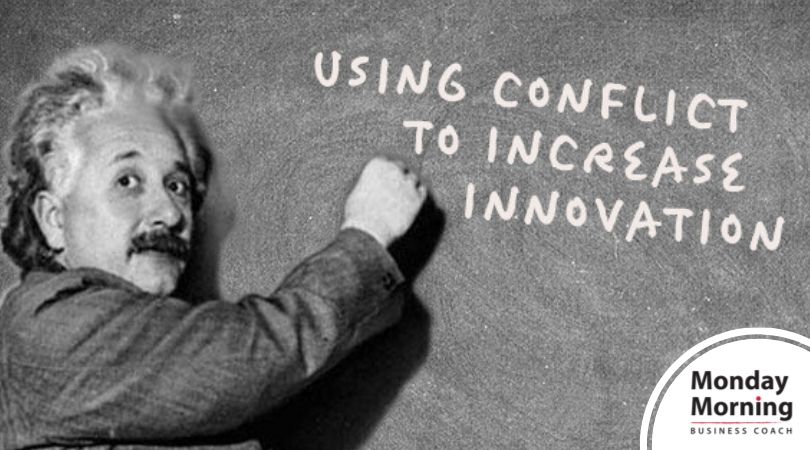Conflict is an important part of fostering innovation, yet many teams are unable to take advantage of this creative endeavor because they lack the skills to disagree respectfully while engaging in a spirited discussion.
Using conflict and difference to foster innovation
is an important skill that every leader, manager,
and director should know how to facilitate.
As we’ve discussed in the last two posts, when left unmanaged, conflict is a deterrent to creativity. People shouldn’t be allowed to be disrespectful or mean to one another. Yet, often due to their own anxiety, leaders don’t interrupt negative conflict. When that happens it’s not safe to have constructive conflict.
- Explore interests and perspectives
- Consider outcomes that are great for the organization
- Develop options to consider, create criteria for deciding, or decide to decide later
- Use objective criteria and a strategic vision to go beyond limitations set by “group think”
We worked with a director once who had heard that conflict was good for innovation. So, not being fully aware of the concept, he decided to incite arguments between his marketing team and sales team.
He thought if they really hated one another they would be creative. Unfortunately, this was disastrous for him and for the teams he was supposed to be leading. He needed to create opportunities for constructive conflict, not just create negative conflict.
- Ask that people take the opposite view of what’s been shared. Say something like, “Now let’s play the devil’s advocate” or “Let’s find the weak seams in what’s just been said.”
- Encourage questions that “poke holes” in ideas.
- Insist that every good idea also has a reason why it’s a bad idea. An easy way to do this is to explore the benefits of an idea and then explore the concerns that people have about the idea. You can see the full framework here: Benefits, Concerns, Suggestions.
- Always interrupt negative conflict. Don’t tolerate snide comments or outbursts.
- Always remind people to attack the problem, not the person speaking.
This takes practice, but the more you motivate your team to challenge ideas the greater the likelihood that you will acquire innovative and creative ideas from your team.
This week, look for opportunities to increase creativity and innovation through constructive conflict.
for creative conflict and would like some
support in getting started, contact us today
about our Executive Coaching.

